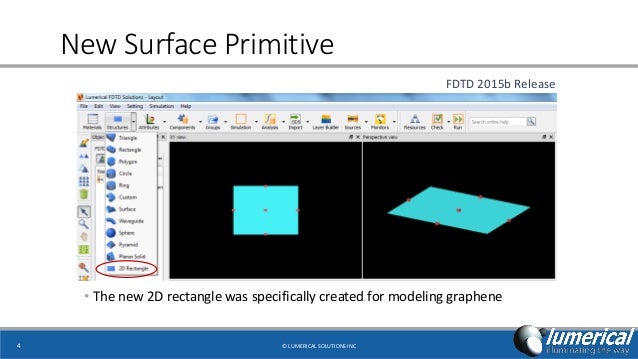

Typically, the simulation is run until there are essentially no electromagnetic fields left in the simulation region. Subsequent iteration results in the electromagnetic field propagation in time. The FDTD method is used to calculate how the EM fields propagate from the source through the structure. Light sources may be added to the simulation. Structures to be simulated can have a wide variety of electromagnetic material properties. This technique is an exact representation of Maxwell’s equations in the limit that the mesh cell size goes to zero. Maxwell’s equations are solved discretely in time, where the time step used is related to the mesh size through the speed of light. The electromagnetic fields and structural materials of interest are described on a discrete mesh made up of so-called Yee cells. The technique is discrete in both space and time. It is a fully vectorial method that naturally gives both time domain, and frequency domain information to the user, offering unique insight into all types of problems and appFDTDlications in electromagnetics and photonics. What is FDTD? The Finite Difference Time Domain (FDTD) method has become the state-of-the-art method for solving Maxwell’s equations in complex geometries. Ring resonator design for channel drop filter 26Īnalysis of resonant modes and the corresponding decay

Manufacturing tolerances are also calculated. Application TypeĬalculation of the absorption, scattering and extinction crosssections of a sub-wavelength particle.ĭetermination of the insertion loss or return loss, and frequency response of waveguide-based components. The final sections contain examples that are accompanied by step-by-step instructions so that you can set up and run the simulations yourself. This introductory chapter of the Getting Started Guide introduces the general FDTD method and provides a basic overview of the product usage. FDTD Solutions is useful for numerous engineering problems of commercial interest including: integrated optical components display technologies optical storage devices OLED design biophotonic sensors plasmon polariton resonance devices optical waveguide devices photonic crystal devices LCD devices FDTD Solutions is an accurate and easy to use, versatile design tool capable of treating this wide variety of applications. The available alternative computational methods - often relying on approximate models - frequently provide inaccurate results. It is especially useful for describing radiation incident upon or propagating through structures with strong scattering or diffractive properties. The FDTD algorithm is useful for design and investigation in a wide variety of applications involving the propagation of electromagnetic radiation through complicated media.

Introduction The goal of the Getting Started Guide is to introduce FDTD Solutions and demonstrate how it can be used to model a number of simple systems. Table of Contents Part I Introduction 1 2 3 4


 0 kommentar(er)
0 kommentar(er)
